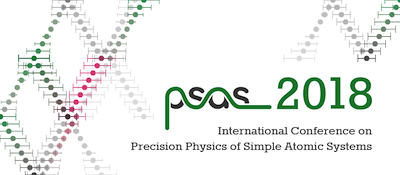Speaker
Description
At present a theoretical prediction for the spin-averaged frequency of vibrational transitions in the hydrogen molecular ions (HMI) has reached a relative precision of $\sim\!7.5\!\times\!10^{-12}$ [1]. On the other hand, recent experiment [2] on pure rotational transition in HD$^+$ has demonstrated the power of the Lamb-Dicke regime for precision spectroscopy of the HMI and potentiality in the nearest future to achieve a ppt level of spectroscopic accuracy. At the same time, it discloses new problems, which have to be solved in theory in order to comply with requirements of precision comparison with experiment. Namely, for pure rotational transitions it is essential to include into consideration the spin-dependent part of transition energy, which takes into account all corrections up to order $m\alpha^6$.
In our presentation we also discuss other problems, which are to be considered in order to improve theoretical predictions (by a factor of three at least). That will bring theoretical precision to the level better than the uncertainty in the Rydberg constant as determined by the CODATA14 adjustment of the fundamental constants [3].
References:
[1] V.I. Korobov, L. Hilico, and J.-Ph. Karr, Fundamental transitions and ionization energies of the hydrogen molecular ions with few ppt uncertainty. Phys. Rev. Lett. \textbf{118}, 233001 (2017).
[2] S. Alighanbari, M.G. Hansen, S. Schiller, and V.I. Korobov, Rotational spectroscopy of cold,
trapped molecular ions in the Lamb-Dicke regime. Nature Physics 14, (2018).
[3] P.J. Mohr, B.N. Taylor, and D.B. Newell, Rev. Mod. Phys. 88, 035009 (2016).

